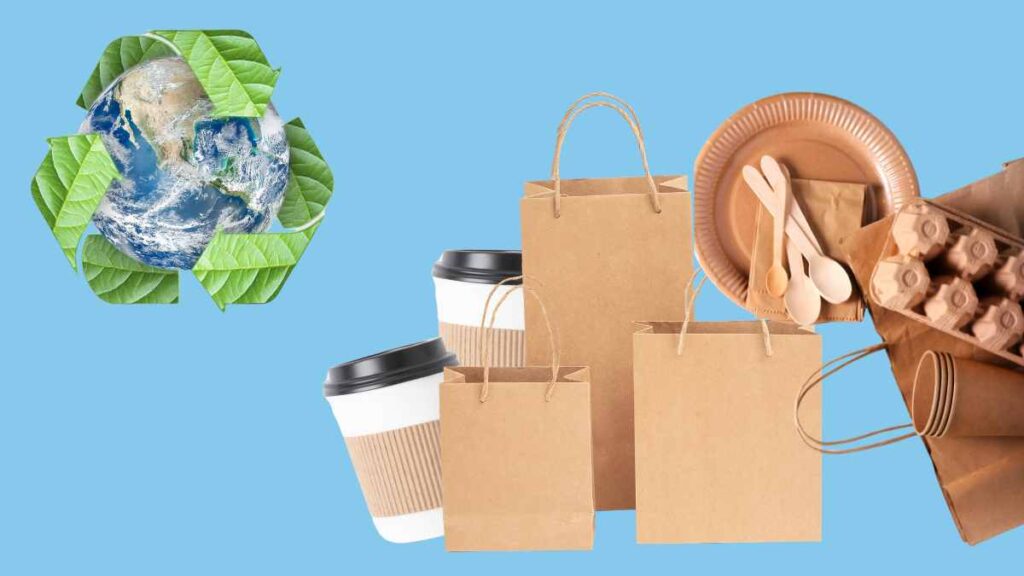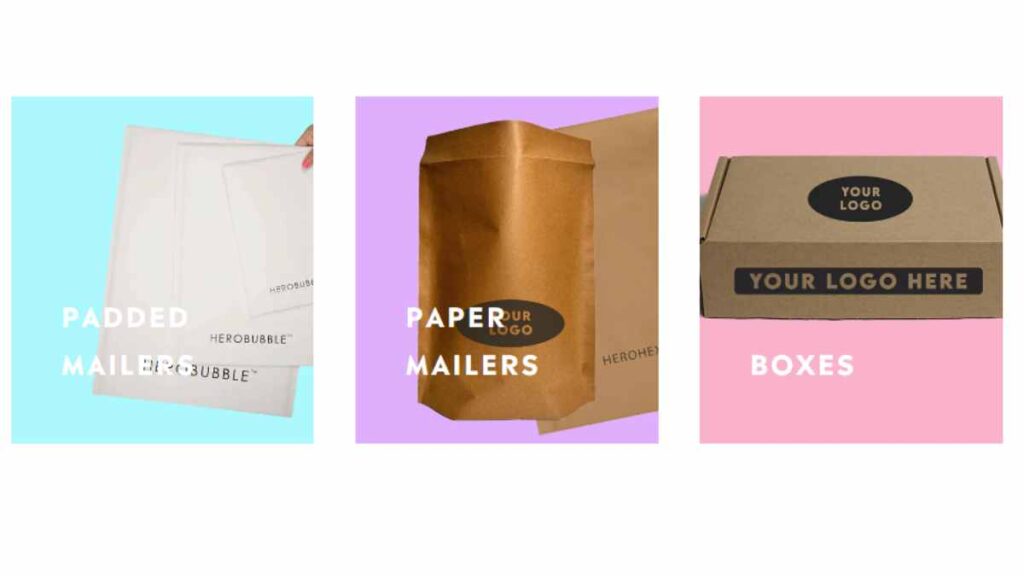More customers are demanding sustainable packages for their purchases, or else they’d go shopping elsewhere. It’s now more than ever important that businesses focus on packaging innovations using compostable materials to increase customer satisfaction.
But how do small businesses design sturdy, eye-catching packages that are also kind to nature?
Australian corporates have a long way to go to make it easier for businesses and citizens to recycle packaging supplies by manufacturing sustainable packages for products.
Australia’s sustainability targets
The latest available research shows Australians recycle only 18% of plastic packaging. There is a dire need for better packaging solutions.
In 2018, Australia established the ambitious 2025 National Packaging Targets. These targets create a framework for corporates to force green packaging in Australia.
To help achieve this ambitious target, Locate2u is outlining creative ideas and best practices to enable corporates to contribute to the collective drive to create a greener Australia.

What are the sustainable criteria?
The Australian Packaging Covenant Organisation (APCO) has set up Sustainable Packaging Guidelines to help Australian entrepreneurs balance the need for reusable or compostable packaging with the need to keep it sturdy and creative.
APCO works with the Australian government and private sector to reduce the impact of packaging on the country.
The manufacturing process, as well as the materials used and the transport process, need to align with sustainable package guidelines.
Plastic packaging waste guidelines
Designing packaging for products must incorporate sustainable elements that allow for recycling, reuse, or commercial compostability. The packaging must also make it as easy as possible for users to minimize litter.
Manufacturers should be cautious about the chemicals and materials used to manufacture packaging. When it ends up in landfill sites, it should not release harmful chemicals into water resources or soil.
Ethical sourcing of the products to manufacture the packages is also vital. It impacts the environment in multiple ways.
Lastly, the transportation of the packaging should be minimized. If the packaging is unnecessary, it results in less space in delivery trucks, ultimately sending more vehicles on the road.

Creative yet compostable packaging
Production Packaging Innovations suggests investing in design innovation to guarantee your purposes for sustainable packaging are not wasted. You shouldn’t compromise on quality or creativity.
Here’s a pro tip: When a package is easy to disassemble, the customer is more than happy to dispose of it properly.
PPI warns against mixed-material packaging designs, such as plastic and glass. These confuse customers, and they do not recycle the packaging.

Eco friendly packaging materials
According to APCO’s sustainability package plan, by 2025, 100% of packaging used in Australia must be reusable, recyclable, or compostable packaging.
At the same time, 70% of plastic packaging must be recycled or composted into raw materials.
Why use compostable packaging?
With a smaller carbon footprint, compostable packaging materials are better than traditional plastic.
Cardboard, bioplastics, and paper packaging are compostable and eco friendly packaging materials. They break down easily and are easier to decompose than plastics.
Paper is the safest material to use in compost as it is natural. However, certain limitations apply when paper packaging material is colored with certain dyes. It could also be altered if it has a glossy coating or releases toxic chemicals during the dying process, warns Noissue.
The custom packaging manufacturer says polylactic acid (PLA), as a bioplastic, takes 65% less energy to produce than traditional plastic packaging waste and generates 68% fewer greenhouse gases.

Shipping items in bulk
Our oceans are overflowing with plastic. From plastic straws to fast food containers, sweet wrappers, and other waste. Shipping items in bulk saves money and time, but it also lessens the carbon footprint.
Zero Waste Cartel sells bamboo toothbrushes, but customers have to buy them in a bulk pack of 10. This is to encourage customers to share with others and live more sustainably.
Recyclable, reusable packaging
Reusable and sustainable packaging can be either a box or a tin that serves another purpose, giving it a second life after safely transporting items over long distances.
The Reusable Packaging Association has these three tips:
- Packaging material (like pallets or boxes) is highly durable and can remain in the same condition for multiple trips.
- Regularly inspect the packaging materials and repair them if necessary.
- There is a process in place to recycle the time if it reaches the end of life.
Small items in big boxes
Customers prefer sustainable delivery options and would rather switch retailers if green delivery options weren’t provided. This should make online businesses think twice about their sustainability practices.

Amazon removing extra packaging materials
In 2023, Amazon made a bold decision to ensure that all its packaging material was 100% recyclable in Australia. More than half of Australian online shoppers don’t want extra delivery packaging.
“No added packaging means shipments are lighter, which can reduce C02 emissions per package,” said the retailer at the time.
It’s also no longer using plastic pillows to fill up empty boxes. It now uses paper fillers, which are 100% recyclable.

Sustainable packaging that is sturdy
Nobody wants to open a damaged parcel and wonder if the product is broken. However, to avoid this frustration when trying to comply with sustainable packaging efforts, there are ways to ensure your items are sturdy.
Try to design sustainable packaging that relies on folding and interlocking; this ensures the material lasts longer.

Hero Packaging
From eco-friendly packaging labels to padded packaging and even eco-friendly packaging printers, you name it, the entire process can be green. This is what Hero Packaging in Australia has been experimenting with.
The owners tested different materials until they found compostable packaging that was waterproof but acted like plastic in the shipping process.
Today, they have saved over 20,000,000 single-use plastic bags from entering the ocean. This is thanks to their award-winning, recycled paper packaging and biodegradable packaging.
Based in Sydney, Hero Packaging has supplied millions of homes with compostable mailers globally.

Photo credit: Hero Packaging, Canva, Amazon and APCO
About the author
Mia is a multi-award-winning journalist. She has more than 14 years of experience in mainstream media. She's covered many historic moments that happened in Africa and internationally. She has a strong focus on human interest stories, to bring her readers and viewers closer to the topics at hand.











